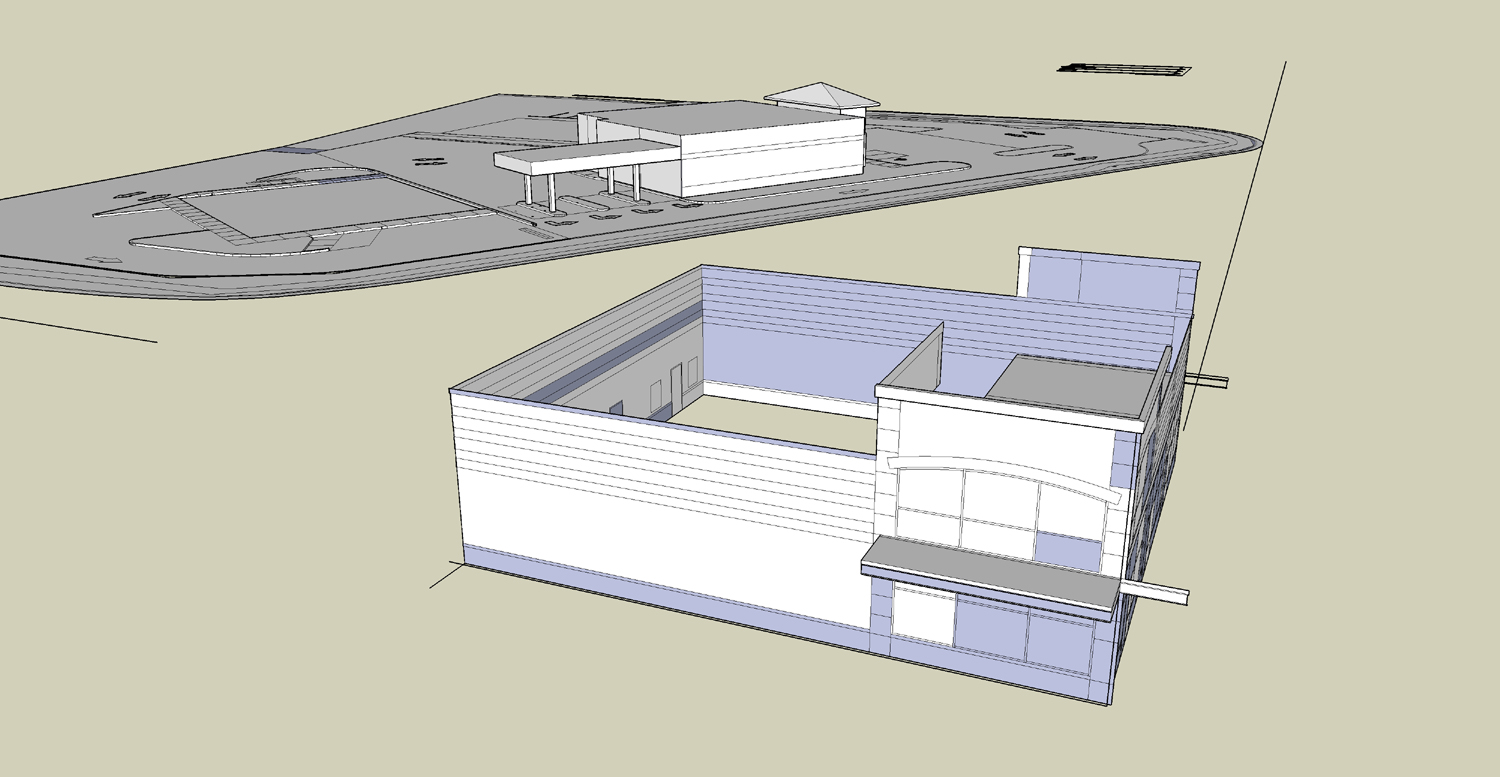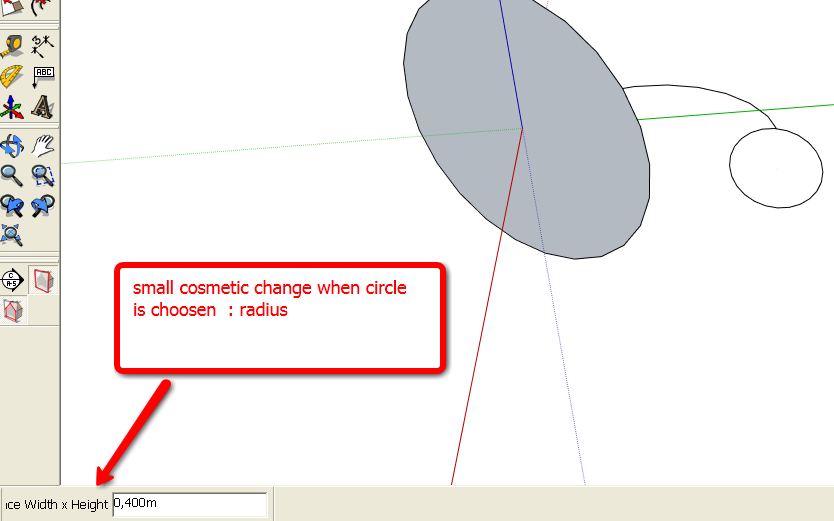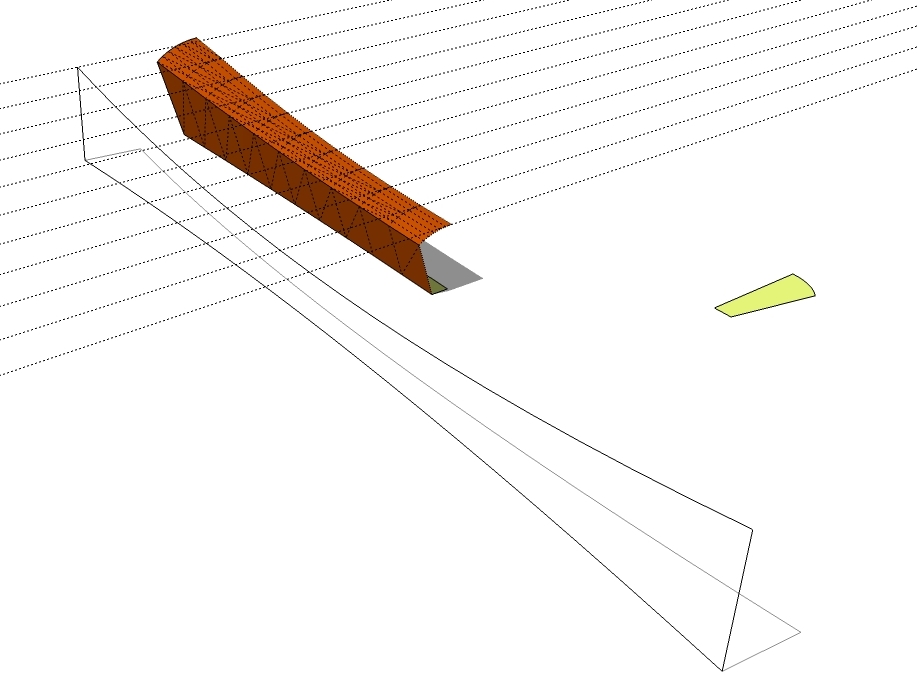[Plugin] Perpendicular Face Tools (UPDATED 26-03-09)
-
Dave that is exactly the sort of thing I thought of using this for when I realized the new features added.
Thanks Chris, this is fantastic

-
Dylan, I was just experimenting and came up with this thing. It could be a drawer or door pull or something. I could have made the corners a bit more rounded but since I started out not knowing what I was going to draw, this is alright. The section is an ellipse and it is thicker in the middle than at the ends. Between Chris's plugin and the Skin plugin, this was all dead simple and fast work.

-
Hey, great woork. Its good to see the plugin being used!
Chris
-
sweet, the circle is working great now..
i'm starting to feel like a pest now but i can't get the rotation to work on my mac.. it doesn't bother me but some other mac users might like the rotate option (and actually, i probably will too once i find myself doing a custom profile).
the status bar says this when i'm using the script:
Click on a line-end to place a perpendicular square on it. ctrl = Use "Arbitrary Rotation"the ctrl key on a mac (in conjunction with the mouse) triggers a right click.
-
Great tool Chris - I can see quite a few uses.
I could see this type of script speeding up the process of putting a model together from imported cad elevations. Attached is a WIP showing a model I just started to assemble from autocad parts. My process now is to make faces, rotate and snap together. I wonder if there is any chance that a divided surface might eventually take advantage of this script?

-
Hi Chris, really good tool

Just have a look :
MALAISE

-
Hmm, interesting I'll look at that cosmetic issue.
Also, is there someone on a Mac who would be able to help me find the right key for the up arrow? You would just install the little ruby attached to this message like a regular ruby. Then run sketchup. Open the ruby console and type:
load 'key_finder.rb'
After you type that, leave the ruby console open. And click back into the Sketchup window. Then press the up arrow. A message will display in the ruby console. Hopefully something like
The Key identifier is: 38
Could you please copy and paste that message back here for me?
Probably just delete the file from your plugins folder afterwards. Thanks
Chris
-
The Key idenetifier is: 63232
(that's for the up arrow)[took me a while to figure out how to open the ruby console
 ]
] -
Excellent, thanks! I'll try to get that worked into the code tonight.
Also, I've thought about trying to make it more compatible with multiple faces. It would not be all that difficult to make it work with multiple flat faces. It would take a little bit more work to get it to work with non-planar faces. But I have a feeling that if I sat down and tried to make it work like that, I would also iron out the bug that makes the custom face tool slightly unpredictable. So maybe it would be good. But multiple planar faces would actually probably be pretty straightforward to implement.
Thanks for the help and suggestions everyone,
Chris
-
Don't the key constants work? It seems like the most portable solution.
-
Well, yes. But I would nee dot figure out how to use those

Also, I didn't spend a lot of time with them because I wanted to use the up arrow key, which it seems is not supported with the key constants.
Have any hints how to you use those and which is best? I like ctrl on the PC, but it apparently conflict on the Mac.
Chris
-
Well, then we woo nee dot show lkie tihs.
if key == VK_UP # do this end -
@chris fullmer said:
I like ctrl on the PC, but it apparently conflict on the Mac.
actually, i'm not quite sure ctrl would conflict..
ctrl is used with some other tools:cmd-ctrl-leftclick = orbit
shift-ctrl with the eraser = unsoften/unsmoothi was just saying earlier that it's generally used for right clicking if you use apple's one button mouse.
with the orbit example, i can ctrl-leftclick and get the context menu or i can add the command key and start orbiting.. i'm guessing it won't be a problem to use ctrl for the rotate function in your script and besides, it would probably be nicer to have a key on the left side of the keyboard instead of the right..
is there anyway i can test a ruby with a ctrl modifier to see if it works on a mac?
-
@jim said:
Well, then we woo nee dot show lkie tihs.
> if key == VK_UP > # do this > end >I am a bad typer and a fast typer.....they don't go together well!
Thanks for the tip Jim. Is there a way to list all the constants? I tried constant_variables (like global_variables does for globals), but thats not it. Is there a variable that contains all the initialized constants?
Chris
-
Chris, I've been playing with this plugin some more. I like it in case you haven't noticed.


This is a drawer or door pull or maybe a handle for the lid of an Asian influenced box. -
Dave, how are you getting the scale to change over the length of the shape? My tool only places the face on the line, but your shapes are all changing scale along their path quite smoothly. What is the trick there?
Chris
-
Chris, I'd love to tell you something like, "I found a loophole in your script."
 Alas, I'm just scaling the faces after placing them. In the case of the last image I posted, I drew a Bezier curve for the path--the curve you see in the top view--and another for the curve you see in the side view. I drew the custom face as half the profile and used your script to put it at the vertices along the curve. I rotated the large end profile 5° off vertical for this pull and then scaled all of them to height to match that upper curve.
Alas, I'm just scaling the faces after placing them. In the case of the last image I posted, I drew a Bezier curve for the path--the curve you see in the top view--and another for the curve you see in the side view. I drew the custom face as half the profile and used your script to put it at the vertices along the curve. I rotated the large end profile 5° off vertical for this pull and then scaled all of them to height to match that upper curve.After that was all done, I exploded the faces, deleted the faces leaving the edges and used the Skin plugin to fill things in. I only made a quarter of the handle, made it a component and copied/fipped it to make the other three quarters.
I probably don't need to use your plugin to create this but it is so quick at putting the faces in at the desired points and I think the end shape looks a bit nicer with the faces turned at each vertex to split the angle.
-
@dave r said:
Chris, I'd love to tell you something like, "I found a loophole in your script."

Ha, yeah right. A "loophole" in my script would be more likely to crash your system indefintely than create unexpected awesome geometry

Thanks for the explanation. I was wondering how you were getting the scaleing to come out so evenly. The bezier above them makes a lot of sense,
Chris
-
An interesting Ruby, Chris. This can be really handy.
One wish from me - Is it possible to pick a reference point (a vertice that sticks to the path) when placing profiles onto a path?
Right now it uses centers (more or less) of faces? -
Chris, I don't mean to be getting off topic but here's sort of a deconstruction of the thing. The horizontal guides intersect the Bezier curve at the nodes or vertices. (Is it proper to call them nodes?) You can see the Bezier drawn on the ground plane, too. I copied that one and used the copy as the "path" for placing the faces with your plugin. All of this runs parallel to the red axis. Which you would glean from the position of the original face shown in green off to the right.
I did have to scale the faces in the green direction to get the vertical edges to lie on the centerline of the handle.

Advertisement







